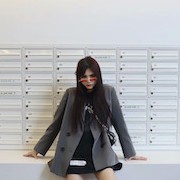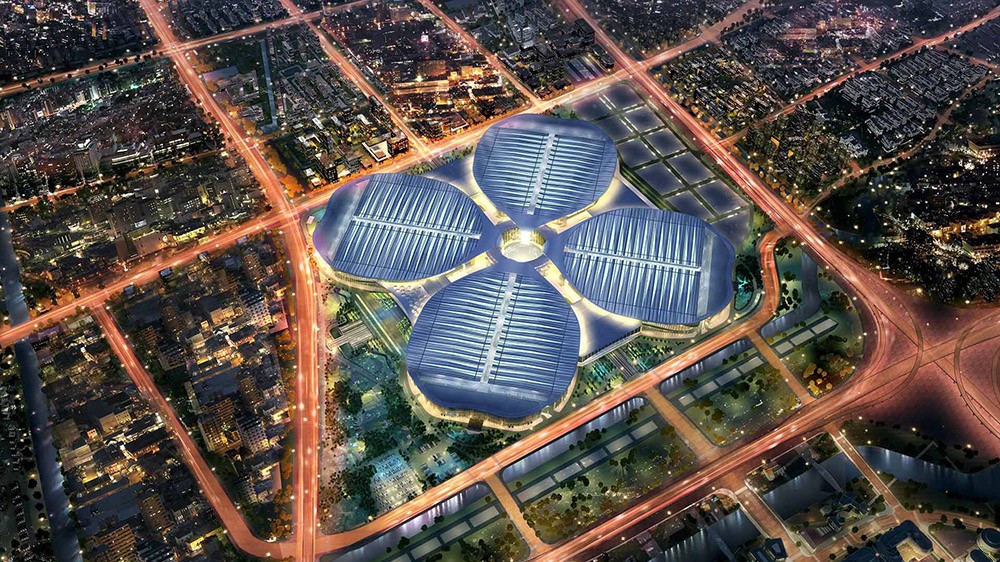
As the Internet environment in China keeps on evolving in 2020, it is increasingly important for oversea companies to keep their presence up-to-date and meet the increasing demands from Chinese consumers.
Knowing web design trends in China is especially crucial for western companies who are expanding their presence into this market. Translating the content is not enough to capture the attention of Chinese website visitors. The structure and design of your western website will most likely not be successful in addressing the cultural differences and consumer behaviours typical of this market.
The following points will provide you with valuable insights which will make your web design appealing to the Chinese audience.
Web Design in China
If you have surfed Chinese websites before, you may have been overwhelmed by the number of links and text you may find on a single page. At times, Chinese sites may make you feel like you are stuck in the year 2000 when overcrowded and confusing web pages were the norm.The lack of development in Chinese web design has been perceived by many as if the country had been left behind, or as a symptom of poor quality. In reality, there are specific reasons for these significant differences between Western and Chinese web design.
One critical reason is the nature of the language and how it is handled by the search function. The search algorithm is amazingly effective in English on platforms like Google. With typing a single word, the algorithm can easily refer to a large amount of related content making your research for additional information very simple and efficient.
On the other side, things become more complicated in Chinese because each word is not a sequence of characters, but instead, each word is represented by the shape of the character. For this reason, getting accurate results from a search is much more complicated and the results are often quite poor. As a result, in the past, web designers often opted to have as much content as possible displayed on a single page to make it easier for users to explore content.
However, what we will consider next, is our assisting in this new trend that we have seen more web designers in China switching to a minimalist design.
Explore New Web Design Trends in China
Gradients
Concerning the use of colours on websites, it is worth mentioning a trend that is getting more and more popular. We are talking about the use of gradients.
Of course, gradients are not new in web design. However, lately, many designers have started playing with them a lot when adding visual impact and creating some depth to a website layout. Even though the switch to minimalistic design has proved very successful in previous years, users today are looking for something more.
We can witness gradients used in backgrounds, over images and illustrations, in buttons and call to actions, and other functional elements like menus and similar things. The advantage of gradients is that although they are pretty simple to use, the visual impact they create is very powerful. Moreover, gradients work very well on both desktop and mobile devices, thus making it very useful in China.
Video Clips on Homepages
We do not need to talk extensively about the power of videos. It is widely known that Internet users prefer to watch videos instead of reading content. Images are easier to follow, more entertaining, and can stir emotions more effectively.
Videos have become a primary tool to promote content on social media and in 2019 we saw them used on website homepages. We believe that this trend will continue even in 2020.
A video added to the homepage doesn’t necessarily need to be a long one. Sometimes, it is only a short clip of just a few seconds, played on a loop. What is important is that the video must be of high quality and capable of conveying the main idea quickly.
If used insightfully, videos will increase the time users spend on your page, giving you more opportunities to generate conversions.
H5 Pages
WeChat H5 pages are gaining amazing popularity in China. Users like to be entertained and to have as personalized an experience as possible. H5 pages allow you to satisfy these needs of the user.
This is especially true if you are planning to launch a marketing campaign in China or you need to engage your visitor more. In these cases, an H5 page should be in the pipeline. These pages come with several advantages, for instance, a faster and cheaper development compared to other tools, like WeChat Mini Programs.
H5 pages are highly interactive, making them utterly likeable. For these reasons they are currently widely used in China and they are a powerful tool to close sales. Not to be overlooked is the fact that H5 pages allow you to collect a wide range of information about your visitors that you can then use to adjust your marketing strategy and make it more focused.
Dark Mode
Products designed in dark mode are increasingly popular in the western world and we can expect this same trend to gain traction in China as well.
Especially for mobile apps, the ability to choose between light or dark mode offers the user the opportunity to customize their experience. As major companies are implementing dark mode with greater regularity, people are getting used to this new visual effect which comes with several advantages.
For instance, the dark mode is less tiring for the eyes as the device brightness adjusts to the external light conditions. Moreover, when in dark mode, the device consumes less energy, thus extending the duration of the battery which your users will not fail to appreciate.
Voice Search Features
Voice search is what allows users to search the website content without typing on the keyboard. They just need to speak to the device and the desired result will pop up.
Voice search is super popular in China for good reason. The Chinese language counts around 80,000 characters. An average user needs to understand around 2000/3000 of them to read and use the Internet. The complexity of the Chinese language has always been a challenge for web designers.
Thanks to Voice search, users do not need to type their queries on the keyboard. They just need to speak them aloud, thus simplifying the process considerably. No wonder this feature has become so popular in China, making it a priority for each website to be optimized for voice search.
Minimalistic Design
Since 2018 we have seen an increase in minimalistic web design in China. Many businesses are following the pattern set by some big companies like, for instance, Asos who has redesigned their platform with a minimalistic approach.
This signals a major change from overcrowded web pages to a more relaxed design. Nowadays, Chinese websites tend to look similar to what we see in the western world.
However, the habit of having massive amounts of links and information on a single web page continues to affect the user’s behaviour. The Chinese still love to have as much information as possible upfront.
Nielsen Norman Group has conducted an interesting study that revealed that today the average Chinese user prefers a simple web design while maintaining a considerable amount of information upfront.
Therefore, web pages shouldn’t be too minimal, otherwise, users may think the company is trying to hide information or has nothing much to say. Therefore, even though the overall design is minimalistic, hyperlinks and previews must be more descriptive than in the western world to instil confidence in the user and provide them with the experience that they are looking for.
Enhanced User Experience
User experience is as relevant in China as it is in the western world. Navigation must be easy, intuitive and quick. However, even in this case, a Chinese website must comply with some local basics.
Even if a minimalistic approach to web design has solved the problem of overcrowded and complicated web pages, the problem with the search feature we outlined before still persists.
Therefore, the design has to be well thought out and implemented in a way to give direct access to as much information as possible. This can be done by creating multiple levels of navigation that redirect to shorter web pages instead of long ones. It is customary on native Chinese websites to make large use of sub-menus and sub-sub-menus.
Moreover, navigation menus must be organized not vertically, but horizontally, since the horizontal structure is easier to scan in the Chinese language. Especially if you are creating a Chinese version of your existing website, you must seriously consider completely redesigning the navigation system altogether instead of replicating the existing one.
Careful attention must be given to the language. Automated translations do not work at all in Chinese since the language is way too complicated. A poor or grammatically incorrect translation will demean the trustworthiness of your business and could be perceived as disrespectful. Therefore, we warmly advise you to hire a qualified copywriter, fluent in the local language, to translate or, preferably, rewrite your content.
Mobile-Only Design
Responsive design is now a priority in web design. However, in China a mobile-first approach is not enough, so a mobile-only design is what you should aim for.
According to the Internet Network Information Center’s (CNNIC) Internet Usage report (2017), 95% of Chinese users access the Internet from a mobile device. The report shows the large role that mobile devices play in China.
The brand should expect your user to visit your website primarily from a mobile device and you must focus your web design on that. Given the extensive use of mobile devices, all major companies have an Official WeChat Account connected to their business, which represents another significant trend in China, as we will explain later on.
Summary
Compared to a few years ago, designing a website for the Chinese market has become more exciting because it now allows more room for designer creativity. When we compare how popular Chinese websites appeared a few years ago to what they look like now, it is evident how much has changed in this market.
It is also important to have the support of a web design agency in China to address the design factors with a thorough understanding of local web design and culture is the most effective solution to pave the way for your success in the Chinese market.



